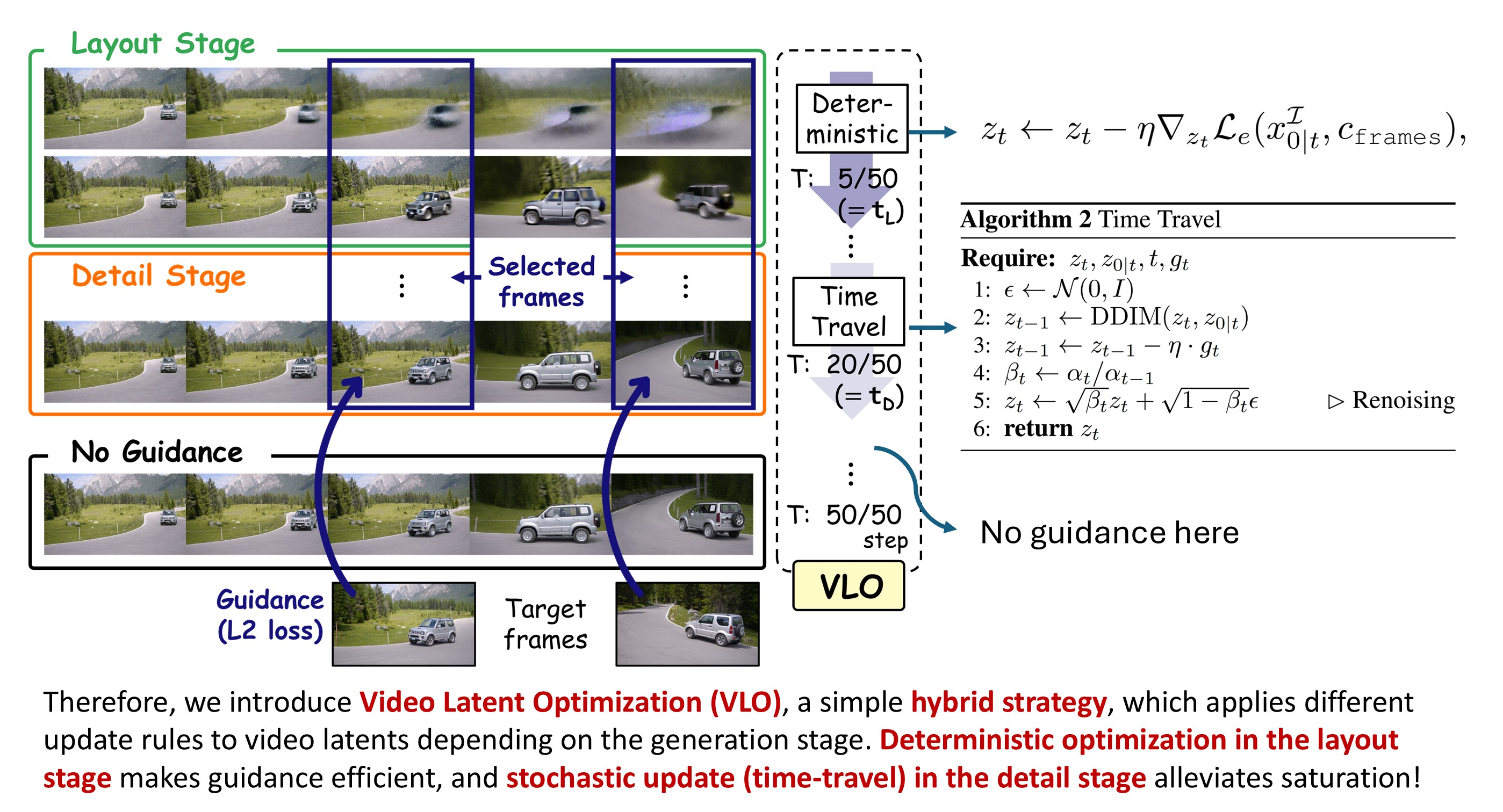Advancements in diffusion models have significantly improved video quality, directing attention to fine-grained controllability. However, many existing methods depend on fine-tuning large-scale video models for specific tasks, which becomes increasingly impractical as model sizes continue to grow. In this work, we present Frame Guidance, a training-free guidance for controllable video generation based on frame-level signals, such as keyframes, style reference images, sketches, or depth maps. For practical training-free guidance, we propose a simple latent processing method that dramatically reduces memory usage, and apply a novel latent optimization strategy designed for globally coherent video generation. Frame Guidance enables effective control across diverse tasks, including keyframe guidance, stylization, and looping, without any training, compatible with any video models. Experimental results show that Frame Guidance can produce high-quality controlled videos for a wide range of tasks and input signals.












